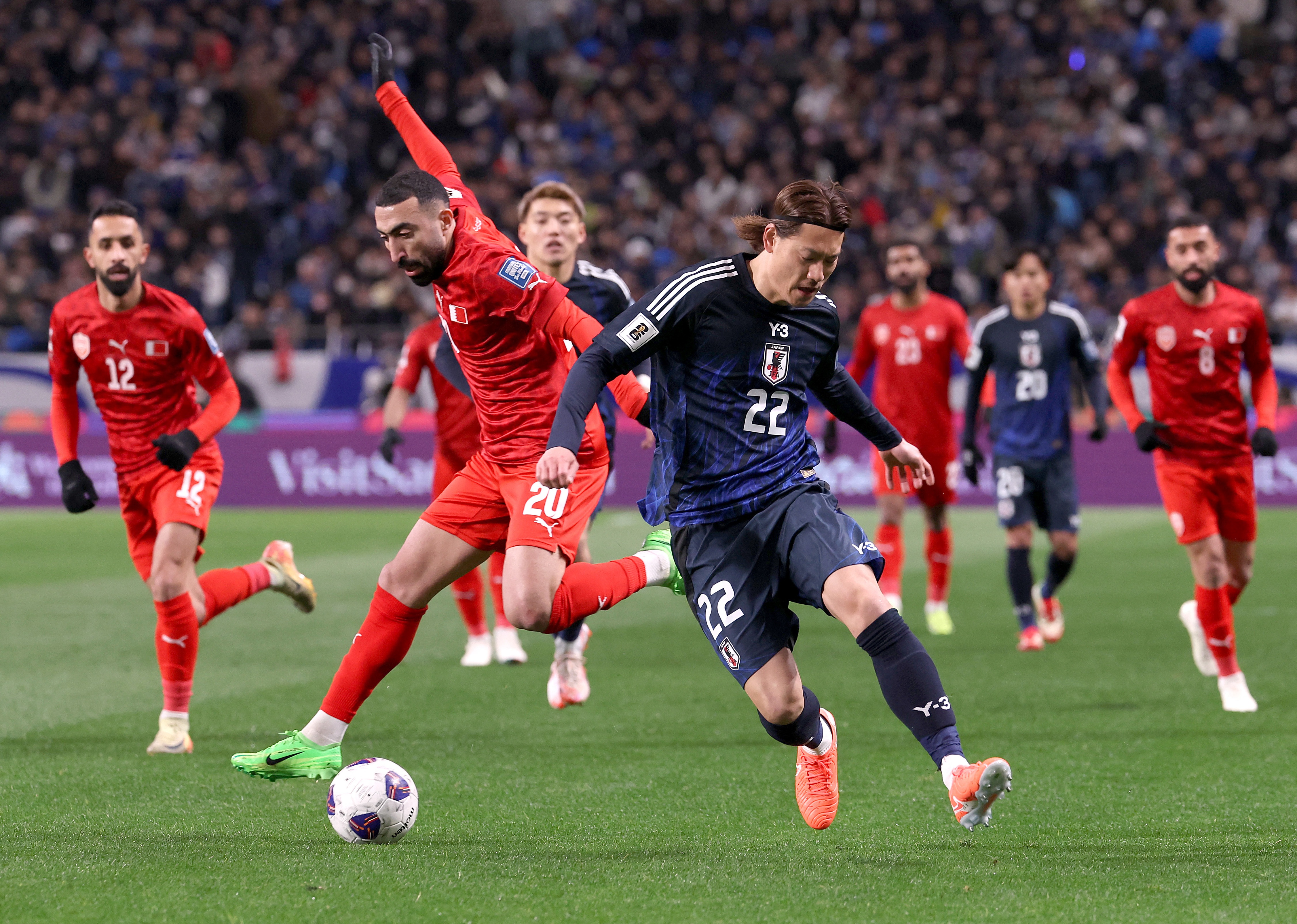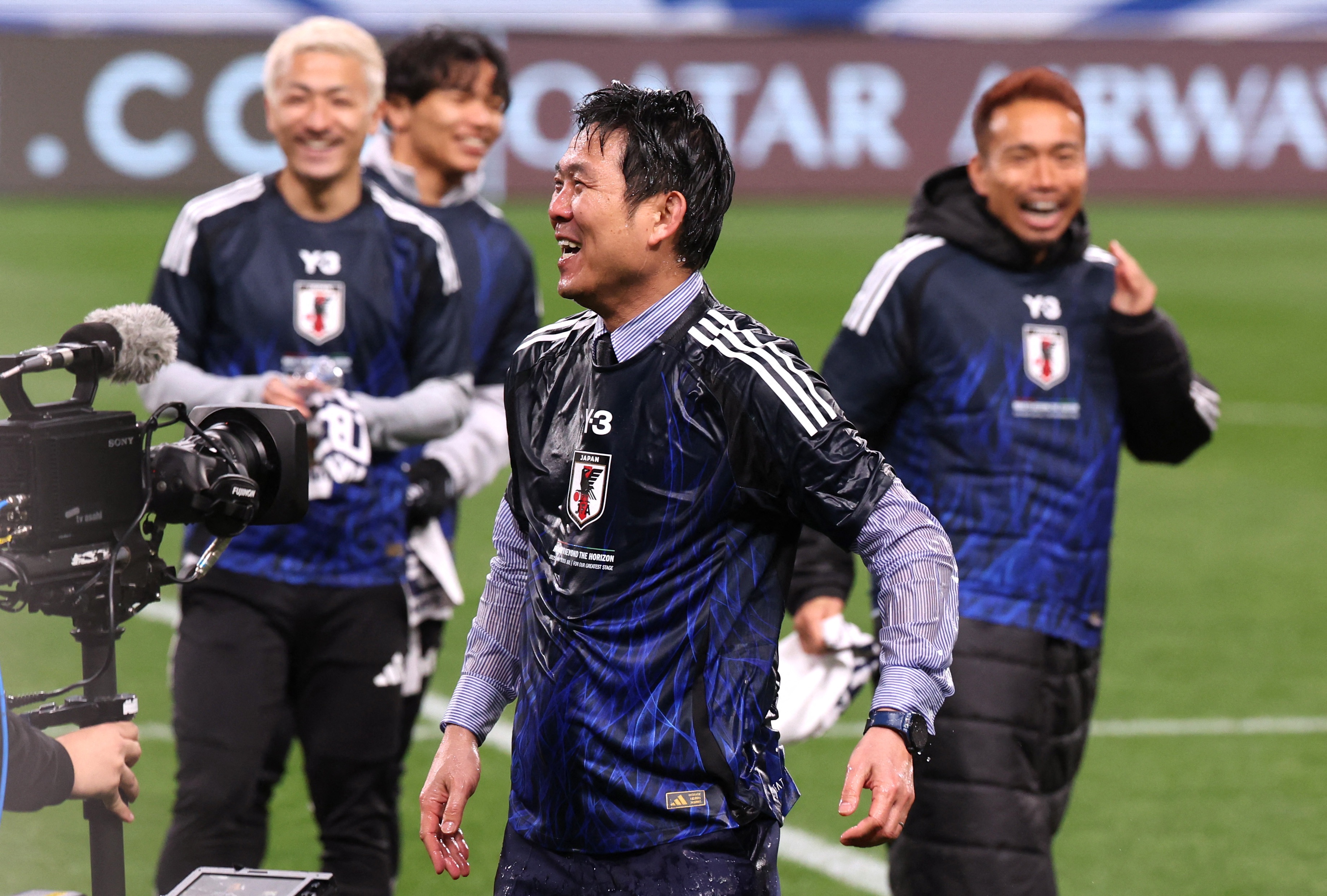 |
In the context of increasingly strong global integration, the Japanese team not only reflects progress in football but also serves as a model of change in society. The development of this national team is a testament to a long process of professionalization and cultural integration, in which, an important part is the increase of the "haafu" community (Japanese people with one parent who is not Japanese) participating in sports , especially football.
The turning point
Japan has had an impressive journey participating in the World Cup since its first in 1998. So far, they have appeared in seven World Cups, and this time, the 2-0 victory over Bahrain on March 20 officially brought a ticket to the 2026 World Cup in three countries: the United States, Canada and Mexico, marking the "Samurai Blue"'s eighth consecutive participation.
This is an impressive achievement, showing the continuous growth and development of Japanese football, from building infrastructure, developing talented players to participating in the biggest tournaments on the planet. The Japanese team not only proves its strong rise in football, but also represents a typical image of social change in the country.
Their squad features a number of “haafu” players, a new generation of players who bring with them diverse cultural traits and heritages. “The players may come from different backgrounds, but the most important thing is that they all play for Japan and work together towards the goal of becoming the best in the world ,” said Japan head coach Hajime Moriyasu.
These shares reflect the integration and acceptance of Japanese society towards individuals from diverse backgrounds. The "haafu" community is increasingly common in Japanese sports, not only in soccer but also in many other sports such as tennis (Naomi Osaka) and basketball (Rui Hachimura).
 |
Japan team just won ticket to World Cup 2026. |
On the pitch, one of the most obvious signs of change is the emergence of players with foreign backgrounds. These players not only demonstrate talent but also contribute to changing public perceptions of cultural diversity. This is a natural development as Japan becomes an increasingly global society, with the arrival of many immigrant groups from Brazil, Peru, Southeast Asia and Africa.
One of the key factors that makes soccer a popular and accessible sport for immigrant and haafu children is its simplicity of participation. According to sociologist Lawrence Yoshitaka Shimoji, soccer only requires a ball to start playing, making it easier for children from immigrant families, including haafu children, to participate compared to other sports such as baseball, which require high investment in equipment.
In recent years, Japanese football has seen a dramatic change in the way players are developed. Naturalized players from Brazil, the country with the largest Japanese community, have contributed greatly to the development of Japanese football since the 1960s. Nelson Yoshimura, a naturalized Japanese player of Brazilian origin, became one of the pioneers in building the foundation for later naturalized players.
Japanese football has also had its fair share of big names, such as Rui Ramos and Wagner Lopes, Brazilian players who played for the Japanese national team at the World Cup. Since then, naturalized players have become an integral part of Japanese football history, helping to bring the Japanese national team to the world stage.
As one of the most diverse teams in the world, the Japanese national team has seen an increase in “haafu” players over the years. A prime example is the presence of mixed-race players in recent World Cup squads.
Several "haafu" players have featured in the national team, including goalkeeper Zion Suzuki and Leo Brian Kokubo, who have performed well in international tournaments.
 |
Japan team is different now. |
The emergence of these “haafu” players reflects a change in Japanese society, where more and more children are born and raised in Japan with non-Japanese parents. According to studies, the proportion of children born to at least one non-Japanese parent has increased significantly over the years, reflecting the development of Japanese society towards openness and acceptance of cultural diversity.
Problems
However, it has not all been smooth sailing. Although Japanese football has seen positive changes in the integration of “haafu” players, problems of racism and discrimination still exist.
“Haafu” players, especially those of black descent, still face racist comments on social media and in everyday life.
Zion Suzuki, the Japanese goalkeeper, has spoken about his experiences with racism as a child and urged fans to stop sending racist messages after matches. Stories like these show that Japan, a slowly changing and more open society, still has a long way to go to promote full acceptance.
The changes in Japanese teams and society are a clear demonstration of cultural integration and diversity. The "haafu" players not only represent Japan on the international stage, but are also models for a society that is changing and becoming more open.
For Japan, competing at the 2026 World Cup would be a milestone not only in terms of sporting achievement but also in terms of progress in accepting and respecting cultural diversity.
As the "Samurai Blue" prepare for the great challenge of the 2026 World Cup, they carry not only the dreams of millions of Japanese people but also the image of a country that is opening its arms to multicultural values, creating a promising future for a generation of Japanese players and fans.


![[Photo] The 1st Congress of Party Delegates of Central Party Agencies, term 2025-2030, held a preparatory session.](https://vphoto.vietnam.vn/thumb/1200x675/vietnam/resource/IMAGE/2025/9/23/e3a8d2fea79943178d836016d81b4981)

![[Photo] Editor-in-Chief of Nhan Dan Newspaper Le Quoc Minh received the working delegation of Pasaxon Newspaper](https://vphoto.vietnam.vn/thumb/1200x675/vietnam/resource/IMAGE/2025/9/23/da79369d8d2849318c3fe8e792f4ce16)
![[Photo] Prime Minister Pham Minh Chinh chairs the 14th meeting of the Steering Committee on IUU](https://vphoto.vietnam.vn/thumb/1200x675/vietnam/resource/IMAGE/2025/9/23/a5244e94b6dd49b3b52bbb92201c6986)
![[Photo] General Secretary To Lam meets voters in Hanoi city](https://vphoto.vietnam.vn/thumb/1200x675/vietnam/resource/IMAGE/2025/9/23/d3d496df306d42528b1efa01c19b9c1f)





















































































Comment (0)